Finding the perfect email cadence in today’s attention economy can be a game-changer. Indeed, the tempo of your emails can make all the difference in building lasting customer connections and boosting your ROI.
Get your email marketing cadence wrong, and you risk frustrating subscribers with too many irrelevant messages. Worse, you could even fade into oblivion with infrequent communication.
However, finding the ideal cadence can unlock a powerful channel for nurturing long-term engagement and driving conversions.
In this article, we’ll explain the meaning of email cadence and why it matters. We’ll also discuss email cadence examples and helpful best practices to guide you along.
Let’s get started.
What is email cadence?
Email cadence is the rhythm and frequency of sending emails to your subscribers. It’s not just about how often you hit “send” but also about the timing and relevance of your messages.
Think of it as the heartbeat of your email marketing strategy. It guarantees your emails are delivered right on time, neither too early nor too late.
The meaning of email cadence extends beyond mere scheduling. It’s also about creating a consistent and predictable pattern your subscribers can rely on.
This regularity builds trust. Over time, it strengthens the relationship between you and your subscribers.
Ultimately, mastering your email cadence means sending the right message at the right time. That’s a powerful way to keep your subscribers connected and interested in your emails.
Why does email cadence matter?
Mastering email cadence is key to successful email marketing. Here’s why it matters:
- Enhances engagement. A well-planned email cadence keeps subscribers engaged without overwhelming them. The result is higher open and click rates.
- Builds anticipation. When you send your emails consistently, subscribers start expecting them, which can increase engagement and conversions.
- Improves deliverability. A well-timed cadence prevents your emails from being flagged as spam. Your messages land in the recipients’ inboxes, which helps you maintain a healthy sender reputation.
- Optimizes subscriber retention. A well-managed email cadence reduces unsubscribe rates. It can keep your audience interested and responsive, preventing list fatigue.
- Helps with resource allocation. By understanding the ideal sending frequency, you can optimize your email marketing efforts. This can save you time and resources while achieving better results.
Email frequency vs email cadence
Email frequency and email cadence are similar concepts, but not the same.
Email frequency refers to the number of emails you send over a period—daily, weekly, or monthly. It’s a quantitative measure that doesn’t account for timing or context.
In contrast, email cadence is a more strategic and nuanced approach. It considers more than just the timing, pattern, and frequency of emails; it also factors in their relevance, consistency, and segmentation.
Some of the elements you should consider to decide the best email cadence include:
- Behavior patterns
- Subscriber preferences
- Overall content strategy
So, while frequency sets the quantity, email cadence focuses on the rhythm. The latter ensures each message arrives when subscribers are most receptive.
The key is to align your email marketing cadence with your audience’s expectations and behaviors. This creates a harmonious flow of communication that resonates with their needs.
Email cadence examples
To achieve perfect email cadence, tailor your strategy to your audience and goals. Data and insights from previous campaigns can help.
Let’s assume you’re creating a welcome series for an ecommerce brand. Your research reveals that new subscribers are most engaged right after signing up. To capitalize on this momentum, an ideal welcome email series could unfold like this:
- Email 1: A warm welcome email introducing the brand. It could offer a special discount tailored to new subscriber interests.
- Email 2 (1-2 days later): An email showcasing popular product categories, based on the subscriber’s demographic preferences.
- Email 3 (3-5 days later): A behind-the-scenes brand story or brand values email. This can help foster an emotional connection.
- Email 4 (1 week later): An email with customer testimonials or success stories. These can come with a reminder of the initial discount to encourage the first purchase.
Let’s discuss a second email cadence example, this time for a re-engagement campaign.
Say you sell cakes online and receive an order to bake a cake for Mother’s Day or someone’s birthday. It means you can set up a re-engagement campaign or a reminder for the same occasion next year, at the same time, for the same person. The cadence of this message is one year. With email automation and segmentation features, this will be easy to set up.
Email cadence best practices
Mastering email cadence is critical to maintaining a healthy relationship with your audience. It can help you create a seamless communication flow and boost conversions. Here are some excellent email cadence best practices to get you started.
Start with audience insights
Before you even begin to plan your email cadence, it’s crucial to understand your audience. The key is to gather as much data as possible about their preferences and behaviors.
Start with the analytics from your email platform to understand when people are opening and clicking on links in your emails. Check your website analytics to understand what content interests them most (some email platforms offer click maps). Also, don’t forget to ask for direct feedback from customers through surveys or social media channels.
The result? A data-driven approach that keeps your emails well-timed and relevant. With a resonant email cadence, you’ll increase engagement and loyalty in no time.
Segment your email lists
One size rarely fits all when it comes to email marketing. So, instead of treating your entire email list the same, the smart idea is to break it down into smaller, more specific groups.
With segmentation, you can tailor emails to each group based on things they have in common.
For example, you could create separate segments for:
- Customers who bought certain products
- People interested in particular topics
- Subscribers from different locations
Segmenting lets you create relevant and interesting emails for each group. Sending personalized, well-timed emails to each segment helps boost open rates and clicks. Ultimately, they lead to more conversions for your business.
Personalize the experience
Personalizing emails goes beyond addressing recipients by name. Make subscribers feel special by creating emails based on their interests, behaviors, and purchase history.
Don’t send the same generic email to everyone. Instead, personalize based on what people like to buy from you.
Look at this email Cotswold Outdoor sent to its athletically inclined clients, featuring its latest walking and running shoes.
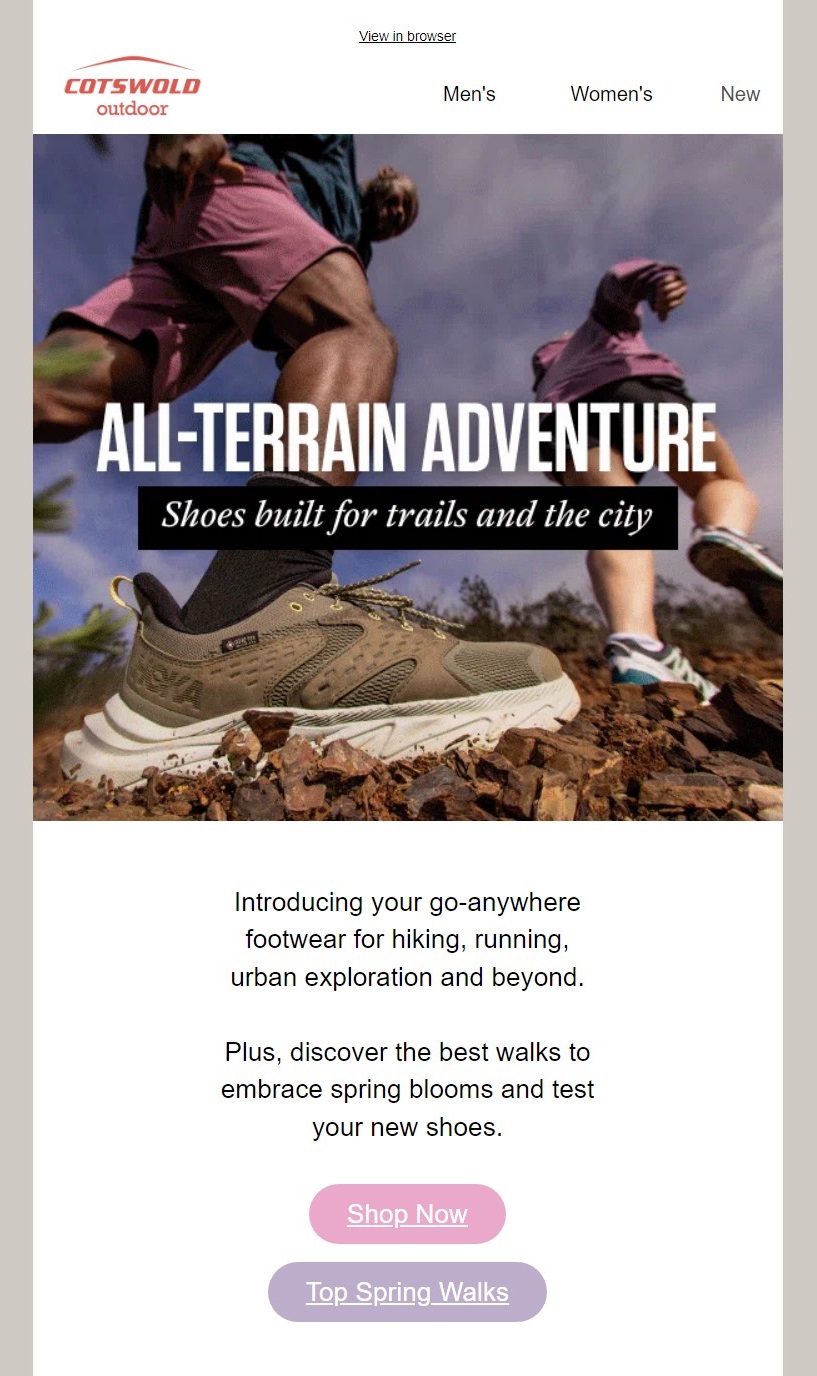 Image via Milled
Image via Milled
For its pet-loving customers, the brand sent an email with recommendations for dog-walking kits and casual jackets.
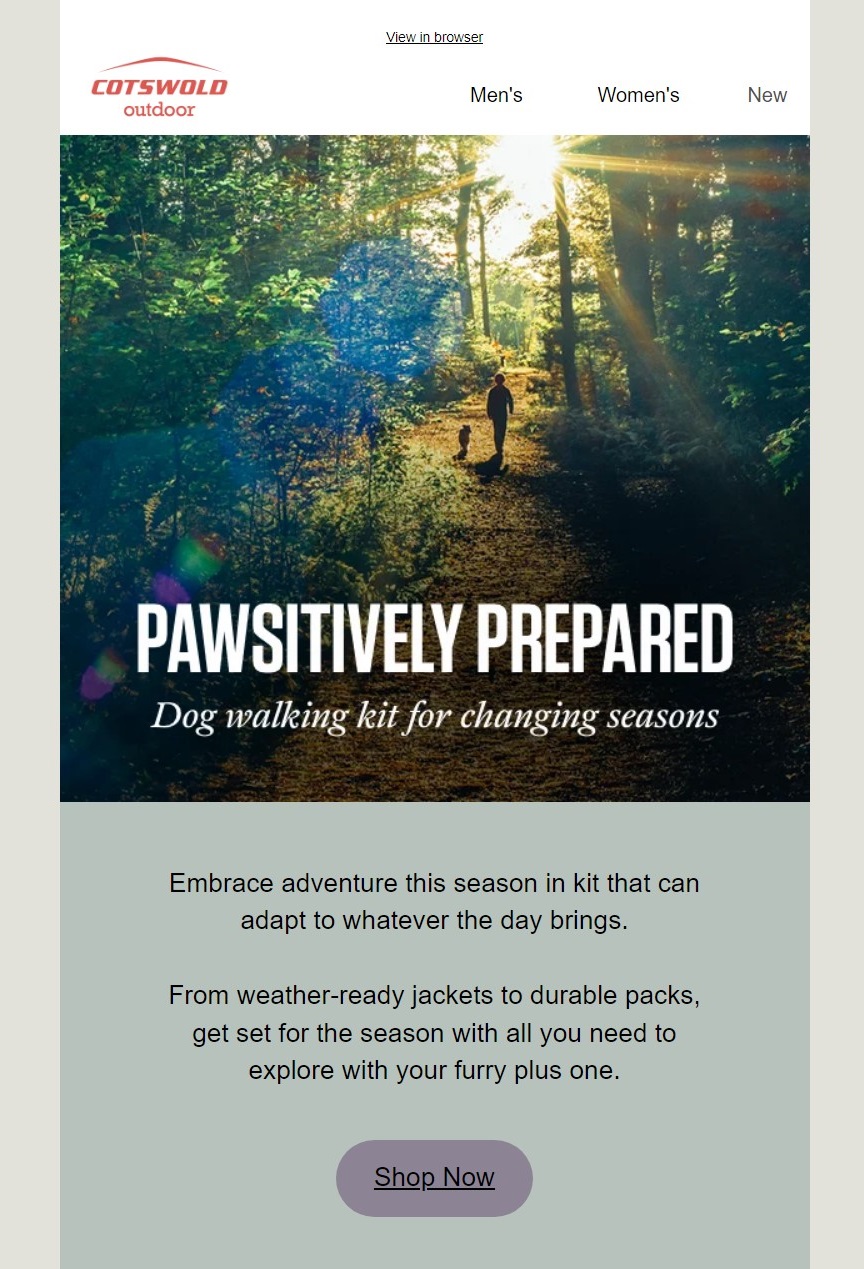 Image via Milled
Image via Milled
You can take it a step further by looking at the content people engage with on your website. Even the products your subscribers have browsed can give you clues. Based on these, you can create emails that promote items and topics they’re interested in.
The more personal and relevant the email experience, the more likely they are to open your email and click on CTAs. A personalized email makes your subscribers feel valued.
Map out the customer journey
Mapping out the customer journey is crucial for setting the right email cadence. Tailoring emails to each stage of the journey enhances subscribers’ experience and strengthens their relationship with the brand.
- Awareness stage. Your emails introduce your brand and top products. These introductory emails set the tone, providing valuable content to educate and engage prospective customers.
 Image via Really Good Emails
Image via Really Good Emails
- Consideration stage. Reach out to customers with emails based on their interactions with your brand. Showcase products or services that meet their needs or address common questions or pain points.
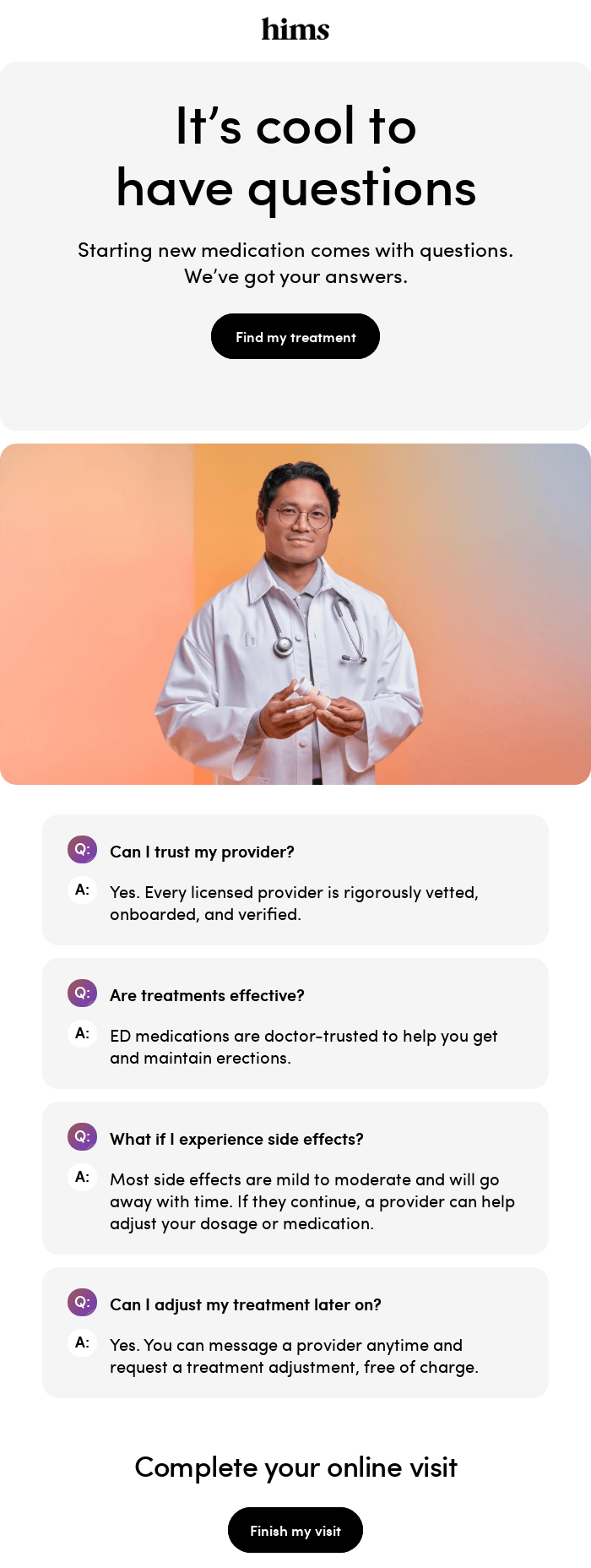 Image via Really Good Emails
Image via Really Good Emails
- Purchase stage. Use personalized offers or testimonials to nudge customers toward buying. Once they make a purchase, follow up with order and shipping confirmations.
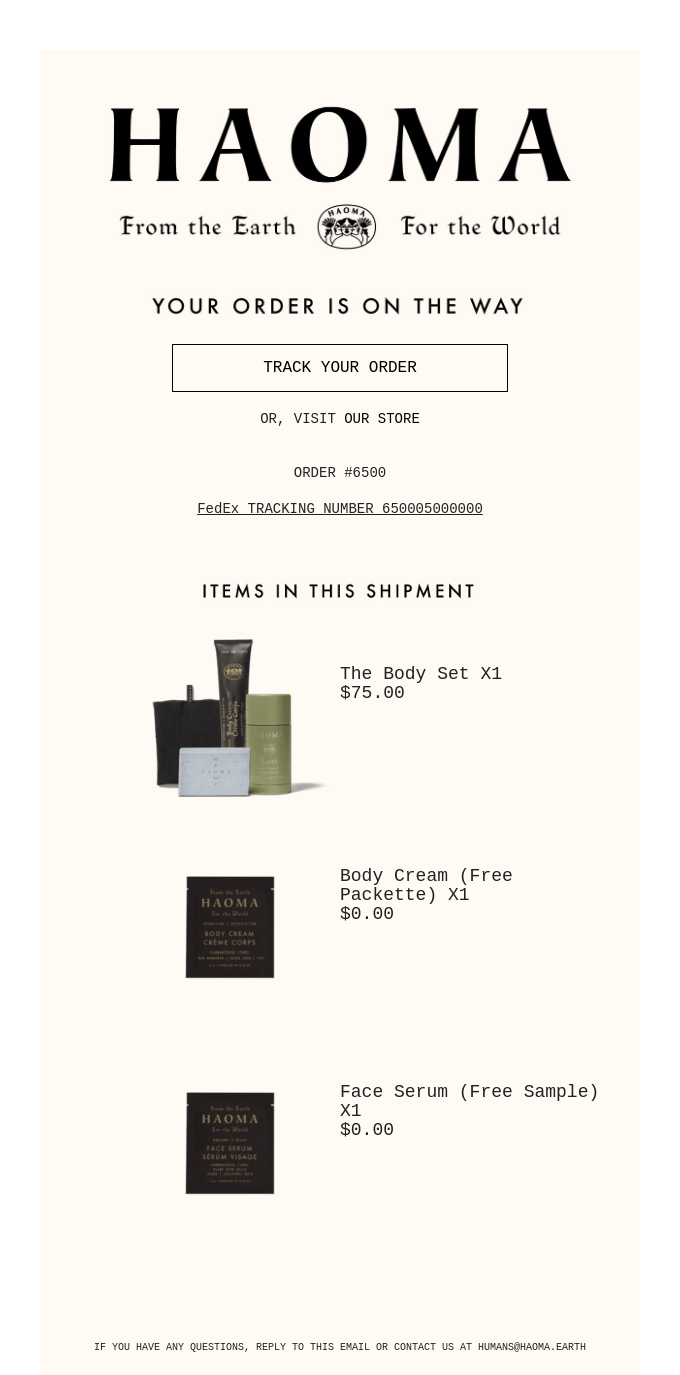 Image via Really Good Emails
Image via Really Good Emails
- Post-purchase stage. Delight customers with tips to get the most out of their purchases. Share complementary product suggestions or request feedback to improve their experience.
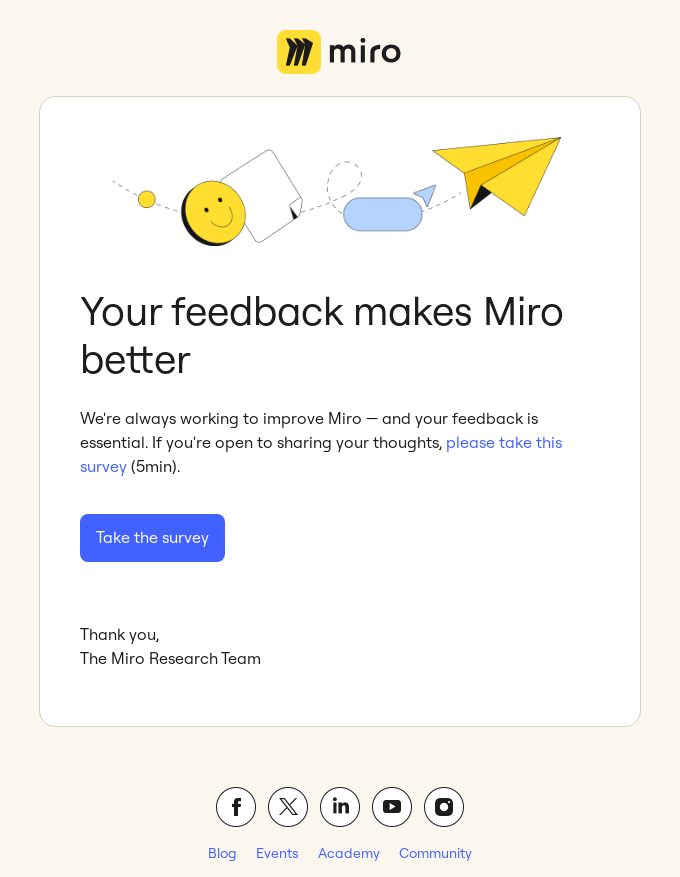 Image via Really Good Emails
Image via Really Good Emails
Finally, regular check-ins can keep the relationship warm and turn one-time buyers into long-term brand advocates.
Use a welcome series
When someone new signs up for your email list, you should make a positive first impression. That’s why having a well-planned welcome series is so important. These emails set the tone for your entire relationship with your subscribers.
Start by properly introducing your brand. Share your brand story, values, and what makes you unique.
Most importantly, provide immediate value to your recipients through discounts, free resources, or helpful tips.
See how Lanolips welcomes new subscribers and nudges them to make their first purchase with a unique discount code.
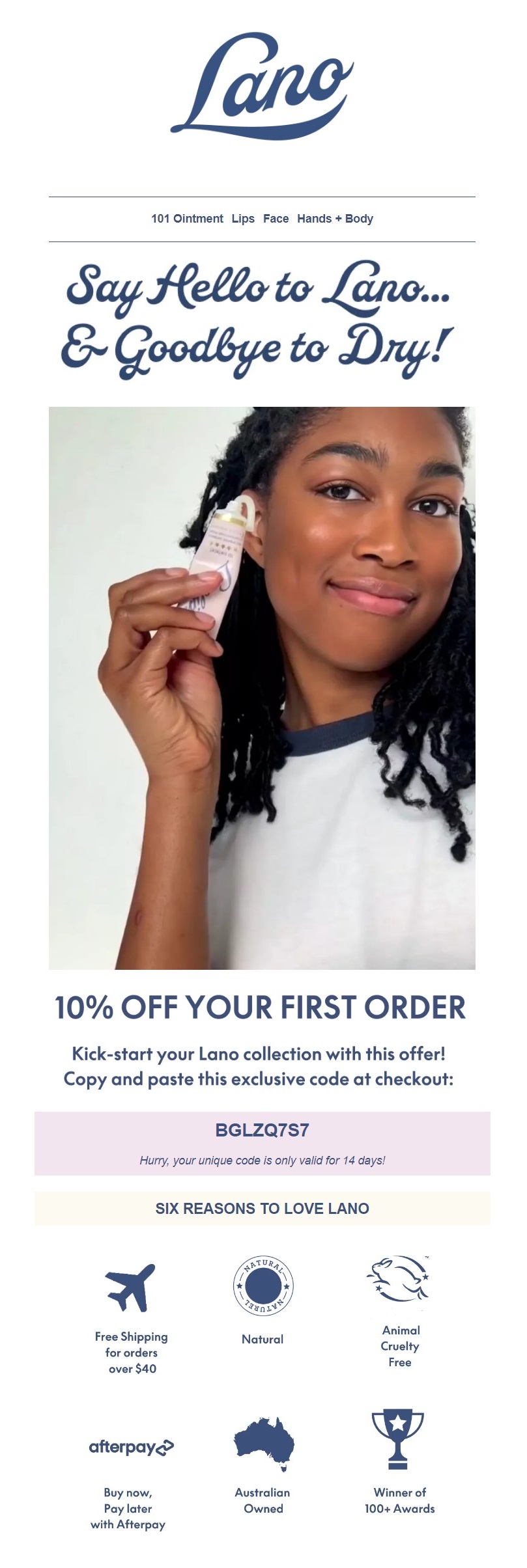 Image via Milled
Image via Milled
Immediate payoffs make subscribers want to stick around and engage with your future emails.
Implement triggered emails
Triggered emails are great for delivering timely and relevant communication.
Why are they useful?
They can help you reach people when they’re already engaged and interested. Triggered emails are automatically sent out when someone takes a specific action, like:
- Visiting particular pages on your site (product recommendation emails)
- Making a purchase (order confirmation and thank-you emails)
- Abandoning a shopping cart or website (cart and browse abandonment emails)
- Joining your email list (welcome emails)
- A certain amount of days of inactivity (re-engagement emails)
- Anniversary, birthday occasions (anniversary emails)
These triggers show subscribers that you’re paying attention to their needs and behaviors. More importantly, they help deliver hyper-relevant content and a personalized experience.
However, when planning your regular email campaigns, you should consider triggered emails. They shouldn’t overlap, so remember to incorporate this rule into your email sending settings.
With the subject line “We’re keeping your cart just the way you left it”, ESR sends this email for cart abandonment recovery.
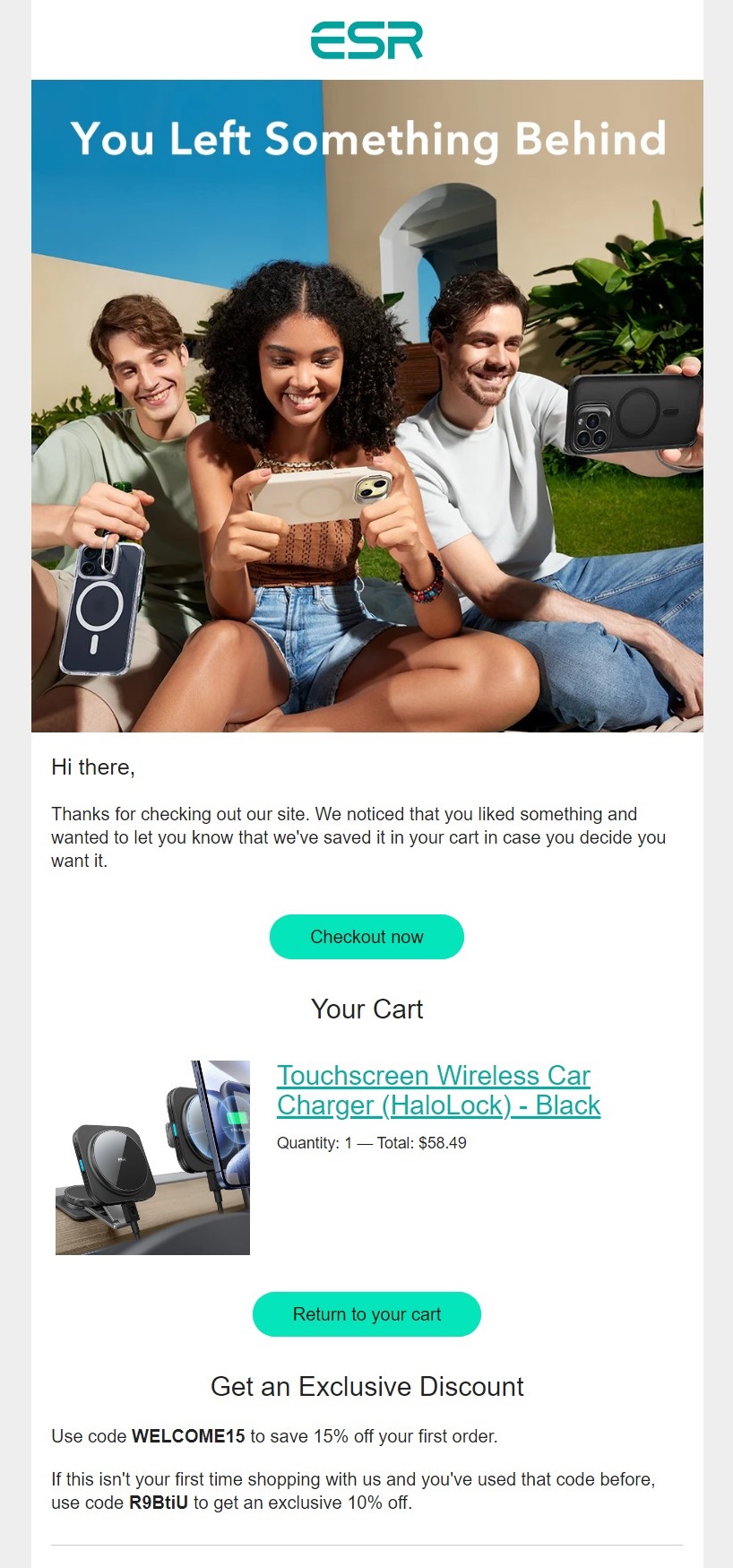 Image via Milled
Image via Milled
Test and adjust
Even if you follow all the best practices to a T, your email cadence won’t be perfect right out of the gate. The only way to truly optimize it is through good old-fashioned testing and tweaking.
Start by identifying which aspects of your cadence strategy you want to test. These might include send times, frequency, content types, and subject lines. Then, create variations to pit against each other.
For example, you could send the same email but at different times of day to see when open rates are highest. As the performance data rolls in, you’ll start to see clear winners emerge.
Maybe your subscribers prefer getting emails twice a week instead of daily. Or perhaps they’re more likely to engage with emails in the evening. Armed with these insights, you can refine and adjust your cadence accordingly.
The key is to keep testing and making data-driven decisions. Email engagement is rarely stagnant, so regularly experiment with your cadence.
Keep making small but consistent refinements. They’ll pay huge returns in maximizing opens, clicks, and conversions over time.
Wrap up
Achieving the right email cadence is both an art and a science. It can determine the success or failure of your email marketing campaign.
The key is finding that sweet spot where your emails are frequent enough to stay top-of-mind. However, they can’t be so frequent that they become an annoyance.
Get your email cadence right, and you’ll unlock a world of engaged subscribers, higher conversions, and a strong ROI.
So, what are you waiting for? Start testing today and find the perfect cadence for your brand.
